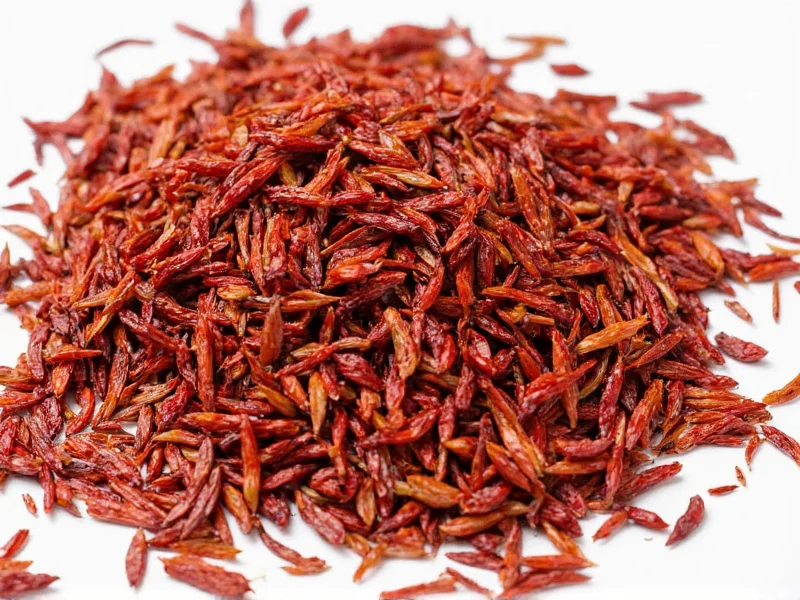When exploring Mexican cuisine, you'll frequently encounter dried chilies that form the backbone of authentic flavors. Chile puya, often confused with similar varieties, deserves special attention for its distinctive heat profile and culinary applications. Understanding whether chile puya is spicy requires examining its position on the Scoville scale, flavor characteristics, and how it compares to other common chilies.
What Exactly Is Chile Puya?
Chile puya (pronounced poo-ya) refers to the dried form of the chile de árbol pepper, though confusion sometimes arises because "puya" can describe different dried chilies depending on regional naming conventions. True chile puya comes from small, slender peppers that measure approximately 2-3 inches long with a deep red color when mature. These peppers grow upright on the plant ("de árbol" means "from the tree" in Spanish), distinguishing them from varieties that hang downward.
Chile Puya Heat Level Explained
With a Scoville rating of 5,000-8,000 units, chile puya falls in the moderate heat category. To put this in perspective:
| Chili Variety | Scoville Heat Units | Heat Comparison |
|---|---|---|
| Chile Puya | 5,000-8,000 SHU | Moderate heat with complex flavor |
| Jalapeño | 2,500-8,000 SHU | Similar or slightly milder than puya |
| Guajillo | 2,500-5,000 SHU | Milder than puya with berry notes |
| Cayenne | 30,000-50,000 SHU | Significantly hotter than puya |
Many home cooks wonder is chile puya spicier than jalapeño. The answer depends on the specific peppers being compared, as jalapeños have a wide heat range. Generally, chile puya provides more consistent moderate heat without the unpredictable "hot spots" sometimes found in jalapeños.
Flavor Profile Beyond the Heat
What makes chile puya particularly valuable in Mexican cooking is its flavor complexity that extends beyond simple heat. When properly toasted and rehydrated, it offers:
- A subtle smoky undertone
- Citrusy notes reminiscent of berry
- Nutty, almost chocolate-like finish
- Medium-thick flesh that creates smooth sauces
Unlike some hotter chilies that sacrifice flavor for heat, chile puya delivers a well-rounded taste experience. This makes it an excellent choice when you want how to use dried chile puya to enhance dishes without dominating them.
Common Misconceptions About Chile Puya
Several misunderstandings surround this versatile chili:
- Misconception: Chile puya is the same as chile de árbol
- Reality: While often used interchangeably, true puya is slightly milder and has more complex flavor notes than standard chile de árbol
- Misconception: All dried red chilies are interchangeable
- Reality: chile puya substitute options exist, but each chili brings unique characteristics to recipes
How to Use Chile Puya in Cooking
For optimal results when working with dried chile puya:
- Remove stems and seeds (seeds contain most heat)
- Dry toast in a skillet over medium heat for 20-30 seconds per side until fragrant
- Soak in hot water for 15-20 minutes until softened
- Blend with other ingredients to create smooth sauces
Chefs often ask is puya chili hotter than guajillo when planning recipes. The answer is yes—guajillo typically measures 2,500-5,000 SHU, making it noticeably milder than puya's 5,000-8,000 range. This difference matters when creating balanced flavors in traditional dishes like mole rojo or adobo sauce.
Storage and Selection Tips
When selecting chile puya:
- Look for deep, uniform red color (avoid brown or faded specimens)
- Choose pliable peppers rather than brittle ones
- Store in an airtight container away from light and moisture
- Properly stored, they maintain quality for 6-12 months
Understanding what does puya chili taste like helps determine proper usage. Its moderate heat and complex flavor make it ideal for dishes where you want noticeable spice without overwhelming heat—perfect for salsas, marinades, and stews that benefit from layered flavors.
Substitutes When Chile Puya Isn't Available
If you're searching for chile puya substitute in recipes, consider these alternatives:
- Guajillo + Cayenne: Mix 2 parts guajillo with 1 part cayenne for similar heat and flavor complexity
- Chile de Árbol: Slightly hotter but similar flavor profile (use 25% less)
- Chipotle + Ancho: For smokier applications, blend these two common chilies











 浙公网安备
33010002000092号
浙公网安备
33010002000092号 浙B2-20120091-4
浙B2-20120091-4